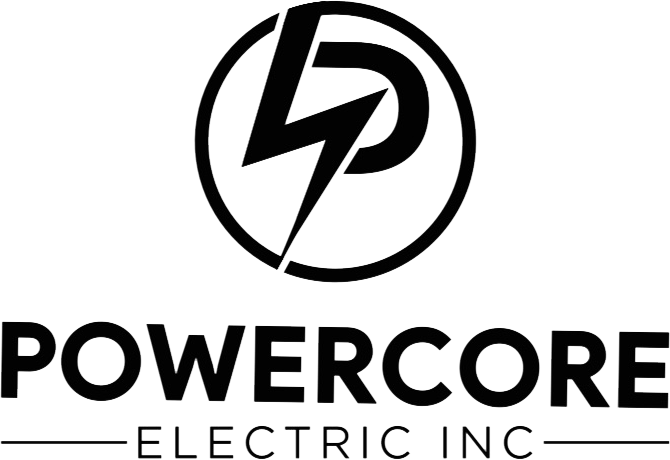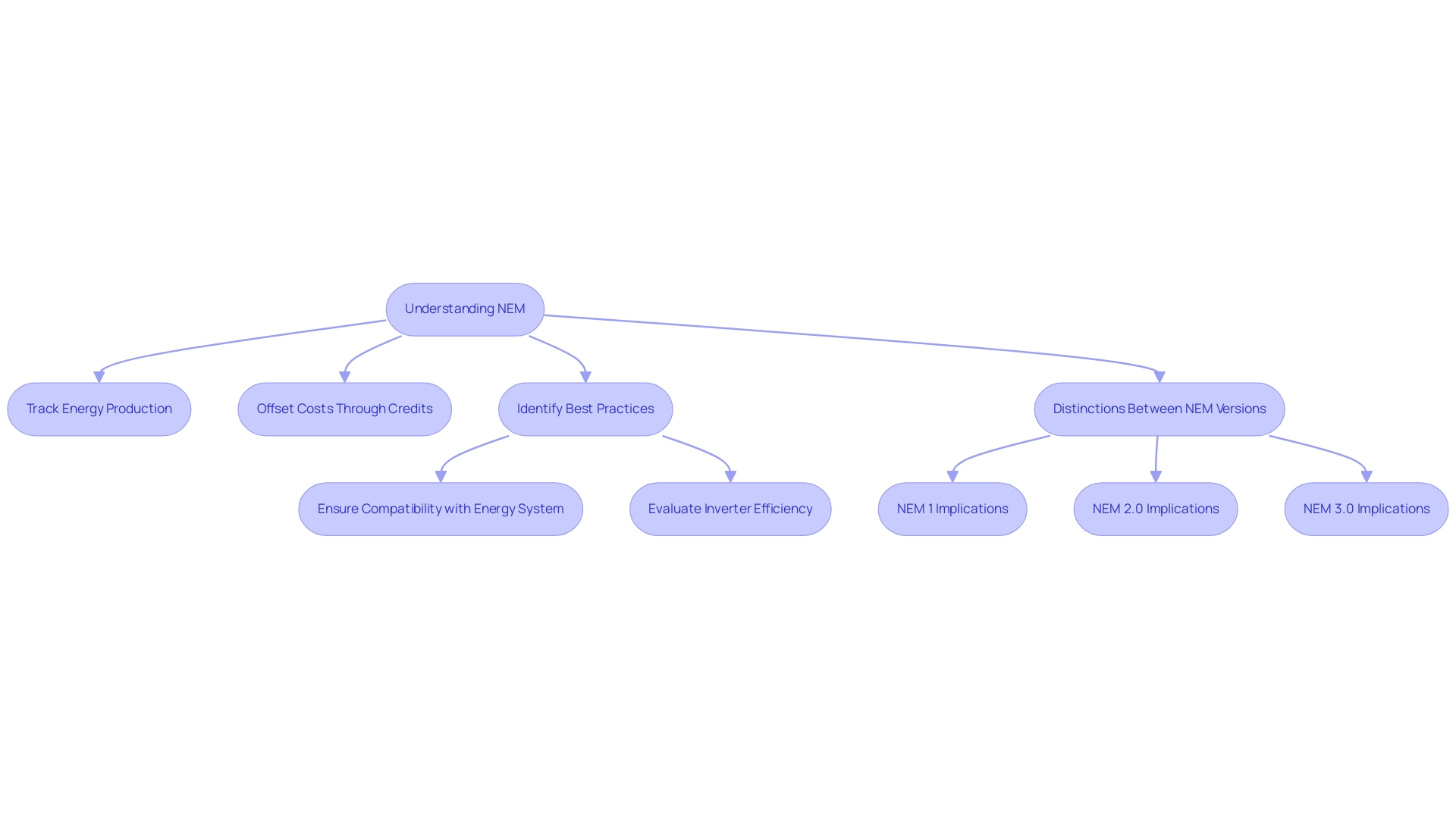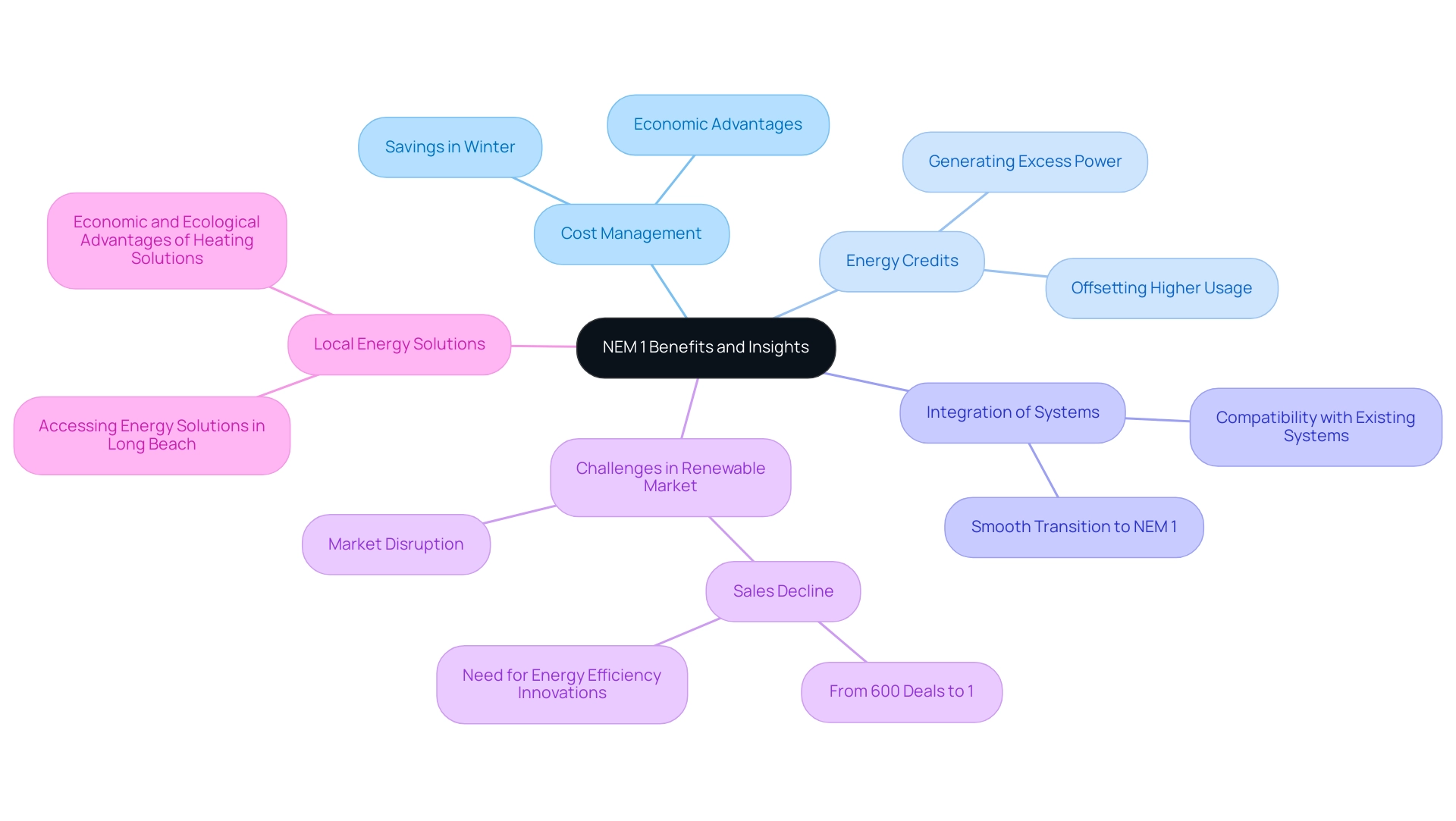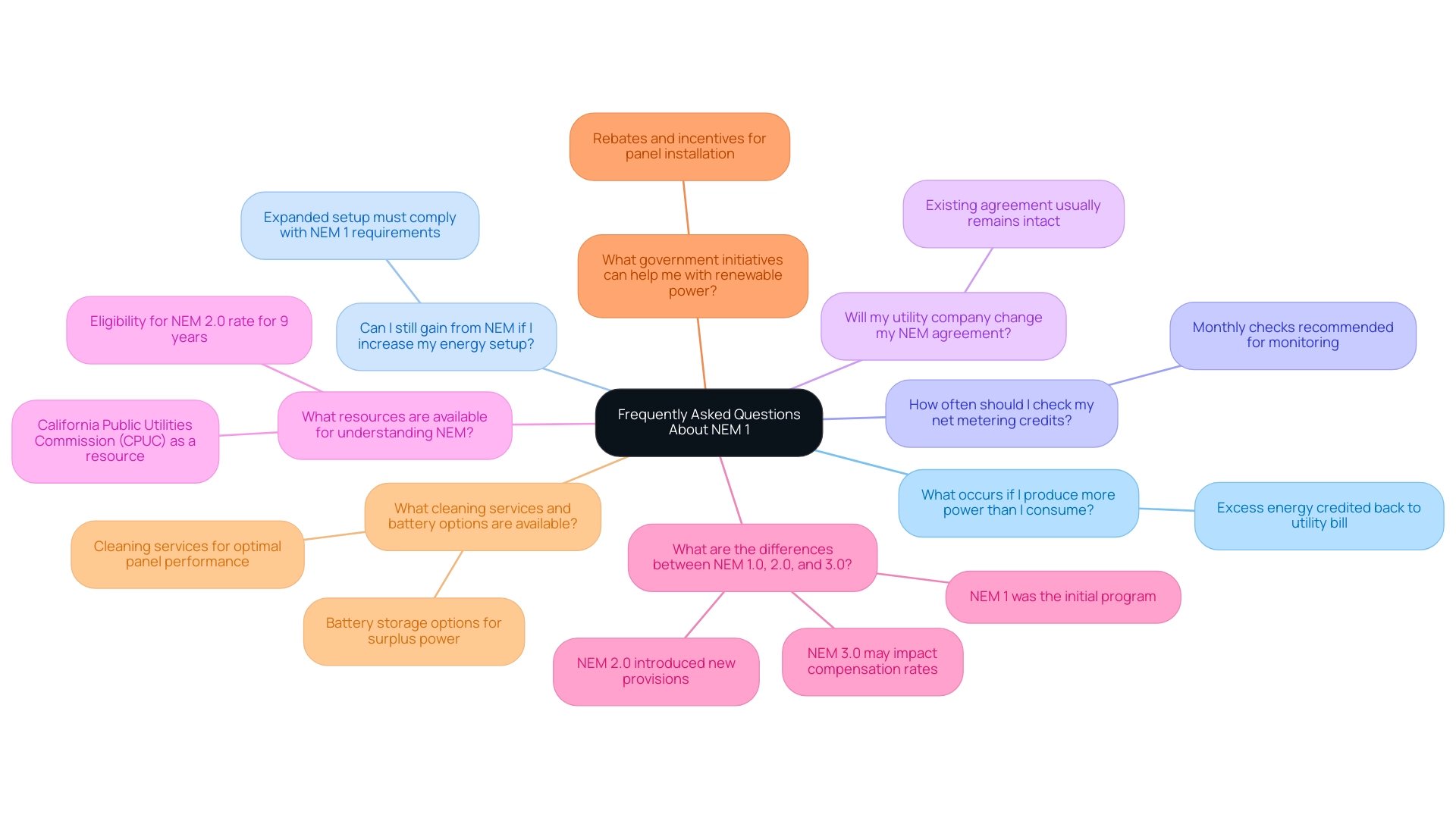Overview
The article titled “Understanding NEM 1: A Complete Tutorial for Solar Energy Users” focuses on the workings, benefits, and strategies associated with Net Energy Metering (NEM) 1 for solar energy users. It explains how NEM 1 allows homeowners to earn credits for surplus electricity generated, thereby lowering their utility costs and promoting sustainable energy use, while also providing practical tips for optimizing solar energy systems to maximize these benefits.
Introduction
Navigating the world of solar energy can feel overwhelming, especially with the variety of policies and options available. One of the most significant advancements for homeowners looking to harness solar power is Net Energy Metering (NEM). This innovative billing system not only allows solar users to earn credits for the excess energy they generate but also simplifies their energy costs. Imagine reducing your monthly electricity bill while contributing to a greener planet—NEM makes this a reality.
As homeowners explore the benefits of solar energy, understanding the intricacies of NEM, including its various iterations like NEM 1.0, 2.0, and 3.0, becomes essential. This article delves into the advantages of NEM, offers practical tips for maximizing solar benefits, and addresses common questions, equipping homeowners with the knowledge they need to make informed decisions on their solar journey.
Introduction to Net Energy Metering (NEM)
Net Power Metering (NPM) is an intelligent billing system created for photovoltaic users, enabling you to receive credits for any surplus electricity you produce and return to the grid. Imagine offsetting your electricity costs simply by harnessing the sun’s energy—that’s the beauty of NEM 1! This system allows your utility provider to track how much power you draw from the grid in relation to what you return, ensuring you only pay for the net amount you genuinely use.
This practice of ‘netting’ your consumption is crucial for maximizing your solar investment while simplifying your utility bill. By encouraging homeowners to generate renewable power, NEM 1 not only aids in lowering monthly costs but also promotes a more sustainable future. As Gabrielė Ptašinskaitė-Mačiulė notes, “Solar developers face fierce competition, congested grids, and a shrinking pool of ideal sites,” underscoring the importance of NEM 1 in overcoming these challenges.
A practical example of NEM in action can be seen in Wyoming’s Net Metering Policy, which allows for a maximum system capacity of 25 kW and credits excess generation in kWh rather than dollars. While this policy reflects ideal net metering practices, it also points out areas for improvement to better align costs with fixed and variable rates.
Thanks to advancements like smart meters, which offer detailed insights into your energy consumption and production, navigating your net metering experience has never been easier. These innovations enhance the NEM process, making it more efficient and user-friendly.
To maximize your photovoltaic system, it’s important to choose the right panel inverter. Best practices include:
- Ensuring compatibility with your energy system
- Considering the inverter’s efficiency rating
- Evaluating features like monitoring capabilities
Moreover, grasping the distinctions between NEM 1, 2.0, and 3.0 can assist you in making knowledgeable choices regarding your renewable power strategy.
NEM 1, for example, introduces changes that may influence your compensation rates and credits, making it essential to stay informed. By understanding how NEM operates and following these best practices, you can optimize your energy setup and contribute to a greener planet!
Understanding NEM 1: Benefits and Operational Insights
NEM 1 is a superb option for solar users, providing numerous advantages to assist you in managing your costs effectively with NEM 1. One of its standout features is the ability to earn credits by generating excess power during sunny summer months. Imagine generating enough credits to offset your higher power usage in winter—what a game-changer for your management strategy!
However, it’s essential to be aware of the current landscape; as Ross Williams, owner of HES Solar, pointed out, ‘We sold 600 deals in the first quarter of the year, but in May, we made only one deal. The disruption was dramatic.’ This illustrates the challenges faced by renewable energy companies and highlights the need to maximize energy efficiency.
NEM 1 provides a smooth transition for anyone contemplating photovoltaic energy, allowing existing systems to easily integrate into the net metering framework. Comprehending these advantages is essential for making informed choices about your energy investment. As you investigate your power strategies, understanding how NEM 1 can benefit you will enable you to enhance savings and embrace a more sustainable lifestyle, especially in light of the changing challenges in the renewable market.
For those in Long Beach, don’t forget to check out local guides on accessing energy solutions, which can further enhance your eco-friendly journey. Furthermore, take into account the economic and ecological advantages of heating solutions, which can greatly enhance efficiency and sustainability in your residence. Practical instances, like those emphasized in the case analysis on how homeowners gained from domestic photovoltaic systems under the 200% rule, can offer valuable insights into the possible benefits of embracing renewable sources.
Transitioning from NEM 1 to NEM 2.0 and 3.0: What You Need to Know
The change from NEM 1 to NEM 2.0 and 3.0 signifies an important transformation for users in California, and grasping the details of NEM 1 is essential for optimizing your savings. At Powercore Electric, we concentrate on providing customized energy solutions that adjust to these changes. With NEM 2.0, the introduction of time-of-use (TOU) rates means that the value of credits for your renewable energy can fluctuate based on when you generate and consume electricity.
As Solar Negotiators pointed out, previously, it was anticipated that these taxes would increase renewable energy owners’ utility rates by about $60 per month. Thankfully, with our sustainable energy solutions, you can navigate these changes more effectively. Homeowners can also gain from a combined 30% federal tax credit for installing renewable energy and battery storage solutions, enhancing the financial context of these changes.
Looking ahead, the implementation of NEM 1 is set to refine these policies even further, potentially altering compensation rates and affecting how much you can save. To make the most of these changes, it’s wise to consult with your solar provider, like us at Powercore Electric. We can offer personalized guidance on how to modify your usage habits, ensuring you enhance your setup’s performance and financial advantages.
Furthermore, advancements in battery technology and energy management systems, such as those offered by Powercore Electric, are expected as a result of the evolving NEM 1 policies. Companies such as Exro Technologies are at the forefront with innovative solutions like the Cell Driver™, assisting customers in maximizing their self-consumption and effectively navigating the financial landscape of NEM 3.0. By selecting Powercore Electric, you not only gain access to cutting-edge technology but also benefit from our competitive advantage in the renewable energy market, ensuring you maximize your investment while supporting your eco-friendly lifestyle and financial goals.
Maximizing Your Solar Benefits Under NEM 1: Tips and Strategies
To truly maximize your benefits under NEM 1, there are some straightforward strategies you can implement right away. First and foremost, keep a close eye on your energy usage and generation; this ongoing monitoring can help you spot patterns for better efficiency. Scheduling high-energy tasks—like running the dishwasher or laundry—during the sunniest hours can harness the full power of your solar production.
If your setup is underutilized, consider expanding it, especially given NV Energy’s strict 100% offset limit, which emphasizes the importance of optimizing your current NEM 1 configuration. A larger system can significantly improve your power generation. Additionally, investing in energy-efficient appliances can reduce your overall consumption, further contributing to your home’s sustainability.
Regular upkeep of your energy panels can also ensure optimal performance and longevity, while innovative cleaning solutions can keep them functioning at their best. By adopting these strategies, you not only enhance efficiency but also transform your home into a sustainable power hub, saving you substantial amounts over time. Cumulative savings from renewable energy can exceed $60,000 over 20 years, making these efforts well worth it!
As consultant Sam Wigness highlights, ‘California is notorious for having some of the nation’s highest utility electricity rates, and there is plenty of reason to believe they will continue increasing.’ This highlights the urgency of being proactive now, particularly with recent policies like the Inflation Reduction Act of 2022, which raised the federal investment tax credit for renewable energy to 30%. Such initiatives can significantly reduce utility costs for homeowners who install photovoltaic systems, leading to financial relief in the future.
To evaluate the efficiency of your heating system, consider metrics such as thermal efficiency ratings, which measure how effectively your system converts sunlight into usable heat. Furthermore, choosing the appropriate solar battery can improve your power storage capabilities; alternatives such as lithium-ion batteries are recognized for their efficiency and longevity. Embrace these strategies to improve your autonomy and contribute positively to the environment.
Frequently Asked Questions About NEM 1
- What occurs if I produce more power than I consume? If you discover that you are producing more power than you use, congratulations! That excess energy gets sent back to the grid, and you’ll earn credits on your utility bill for that energy. It’s like receiving compensation for your energy production!
- Can I still gain from NEM if I increase my energy setup? Absolutely! You can continue to enjoy the benefits of net metering as long as your expanded setup complies with the necessary requirements for NEM 1. Just remember to keep your setup compliant to enjoy those benefits without interruption.
- How often should I check my net metering credits? Checking your credits monthly is a smart move. This habit assists you in monitoring your energy consumption and savings, simplifying the management of your budget and comprehending how your renewable energy setup is functioning.
- Will my utility company change my NEM agreement? While utility companies can update their policies from time to time, your existing NEM agreement usually remains intact unless you make substantial changes to your energy system. So, rest easy knowing your current terms are likely secure.
- What resources are available for understanding NEM? The California Public Utilities Commission (CPUC) is a fantastic resource for all things NEM. They provide comprehensive information and updates on policies, making it easier for you to stay informed and empowered as a renewable energy user. Additionally, if you submit a valid Interconnection Request under the Virtual NEM or NEM Aggregation programs after April 14, 2023, you will be eligible to remain on the NEM 2.0 rate for a minimum of 9 years, providing you with stability. To participate in NEM, ensure you have the necessary forms for interconnection and enrollment in the Solar Billing Plan, which are typically handled by contractors who assist with the application process.
- What are the differences between NEM 1.0, 2.0, and 3.0? Understanding the distinctions between NEM 1, 2.0, and 3.0 is crucial for Long Beach renters. NEM 1 was the initial program that allowed for net metering but has since evolved. NEM 2.0 introduced new provisions that benefit users of photovoltaic systems, while NEM 3.0 has further changes that could impact the compensation rates for surplus power. It’s crucial to remain informed about these changes as they can affect your savings and management strategies.
- What government initiatives can help me with renewable power? Various government programs are available that can assist Long Beach renters in accessing renewable solutions, including rebates and incentives for panel installation and efficiency upgrades. Researching these options can significantly reduce your upfront costs and enhance your overall savings.
- What cleaning services and battery options are available? Maintaining your energy panels is vital for optimal performance, and several cleaning services specialize in this. Moreover, battery storage alternatives can be combined with your photovoltaic system, enabling you to retain surplus power for utilization during peak times or outages, further enhancing your autonomy. This guide is designed to help Long Beach renters navigate the ins and outs of solar energy solutions, including Tesla home chargers and solar panel functionality, so you can make informed decisions about your eco-friendly energy journey.
Conclusion
Understanding Net Energy Metering (NEM) is essential for homeowners interested in maximizing the benefits of solar energy. This innovative billing system empowers users to earn credits for the excess electricity they generate, significantly reducing monthly electricity bills while promoting a sustainable energy future. By exploring the various iterations of NEM—1.0, 2.0, and 3.0—homeowners can navigate the evolving landscape and tailor their solar energy strategies effectively.
Throughout the discussion, it becomes clear that proactive engagement with NEM can lead to substantial savings and a more eco-friendly lifestyle. From monitoring energy consumption to investing in energy-efficient appliances, implementing practical strategies can enhance the efficiency of solar systems. Staying informed about changes in policies and utilizing available resources will ensure that homeowners make the most out of their solar investment.
In conclusion, the journey towards harnessing solar power is not only feasible but also rewarding. By embracing NEM and its benefits, homeowners can contribute to a greener planet while enjoying the financial perks of solar energy. Now is the time to take charge of energy consumption, optimize solar setups, and make informed decisions that pave the way for a sustainable future.





